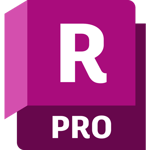If you’ve ever explored foreign cities with Google Earth or played Fortnite, you’ve experienced the benefits of photogrammetry — using photographs to measure and map objects and spaces.
By combining multiple aerial photos along with elevation and topography information from NASA, Google Earth creates realistic 3D views of most major cities. Similarly, video game maker Epic Games uses photogrammetry to give its games a more realistic look in a fraction of the time it would take to design a similar 3D environment from scratch.
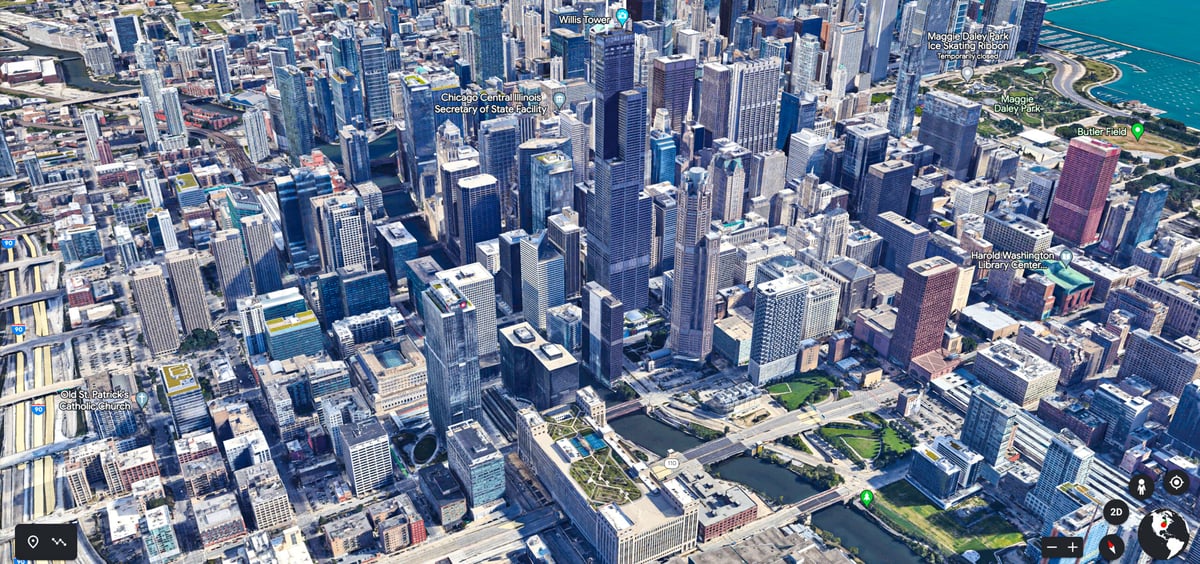
Photogrammetry is arguably more popular than ever, used in all types on online and virtual environments for everything from monitoring real estate construction and analyzes forest canopies, to making virtual tours to major motion pictures more realistic. It’s used to make 3D models of people and things for online shopping, but is most suited for modeling terrains, landscapes, and places that would otherwise be difficult or impossible to 3D scan.
With the proliferation of aerial drones, there’s no limit to the uses for photogrammetry by surveyors, architects, engineers, and even consumers.
Besides landscapes and building sites, photogrammetry is also becoming a really economical way to scan objects with smartphones using apps like Kiri Engine. Since almost everyone now has an effective 3D model maker in their pocket (i.e. their phone camera), retailers are incorporating customer self-scanning to offer virtual try-on of eyewear and clothes. Video game makers are enabling players to scan themselves into games as characters.
Almost any device that can take a picture can be used to create a 3D model through photogrammetry, but its the software that does the heavy lifting. Your app options today vary significantly in features, speed, price,and overall quality. While we’ve covered the free photogrammetry solutions for desktop and mobile phone apps in other guides, here, we focus on the professional solutions, their key features, and what they’re used for.
| Name | Type | OS | Price | Target Industries |
|---|---|---|---|---|
| ReCap Pro 2026 | Aerial, Close-Range | Windows | $50/month, $405/year | Architecture, Engineering, Construction |
| Metashape | Aerial, Close-Range | Windows, MacOS, Linux | Standard $179; Pro $3,499 perpetual licenses | Construction, Agriculture, Forestry, Oil & Gas, Mining, 3D Model Generation, Surveying |
| RealityCapture V1.5 | Aerial, Close-Range | Windows | Free for personal/educational use; $1,250/year | Architecture, Surveying, Gaming, Cultural Heritage, Virtual Reality, 3D Printing |
| 3DF Zephyr (8.0) | Aerial, Close-Range | Windows | Free limited-feature version, ~$2,500/year | Surveying, Mining, Construction, Gaming, Engineering, Agriculture, Architecture, Manufacturing |
| Bentley iTwin Capture Modeler | Aerial, Close-Range | Windows | From $6,000/year | Bridges & Transport, Water & Utilities, Construction, Surveying, Mining |
| Correlator3D | Aerial | Windows | From ~$3,000/year | Surveying, Mining, Construction, Agriculture, Forestry, Emergency Response |
| DroneDeploy | Aerial | Windows, macOS, Android, iOS | From $350/month | Construction, Agriculture, Roofing, Oil & Gas, Mining, Property Management, Utilities |
| Imagine Photogrammetry | Aerial | Windows | On request | Surveying, Mapping, Defense |
| Photomodeler | Aerial, Close-Range | Windows | $68/month Standard, $118/month Premium | Marine, Forensics, Manufacturing, Surveying |
| WebODM | Aerial | Windows, macOS | Free version or $57 | Surveying, Agriculture, Mining, Property Management, Utilities |
What to Look for in Photogrammetry Software
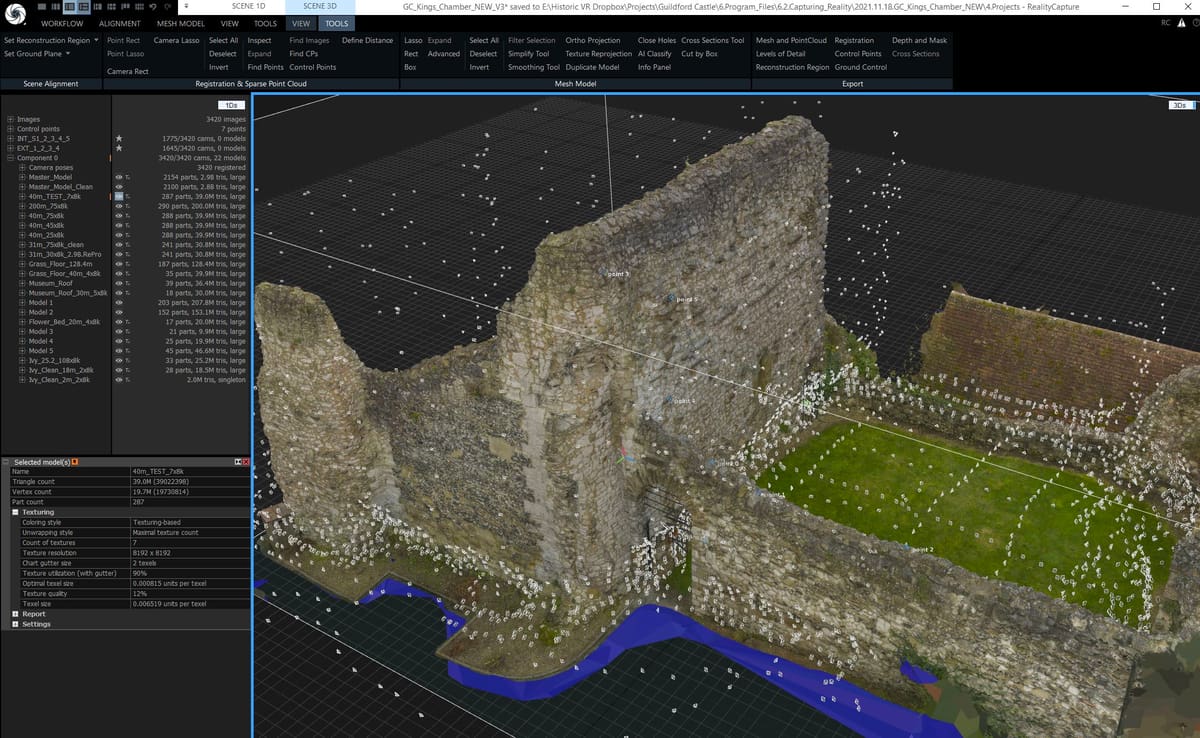
To know what features you need in photogrammetry software, you’ll need to understand how exactly it works.
Using photos as the source of data, the program automatically recognizes the shared points between every image and calculates the distances between them in 3D space. The result is a point cloud that you can transform into a 3D mesh. Some more advanced programs also provide tools for cleaning up the point cloud to enhance the overall quality.
Photogrammetry is generally not considered as accurate as laser or structured light 3D scanners, but is often the only solution for large areas. Where photogrammetry shines over 3D scanning is in capturing color and texture.
For photogrammetry software tools to work properly, sufficient image data is needed, which means lots of large photo files. The data requires processing, which can be quick or time-consuming, depending on the software.
Some solutions work just from photo sources alone, while others can incorporate laser scanning, topological, and other data. Typically, laser scanner data is used for precision and photogrammetry data is overlaid for color and texture.
Some programs also provide their own analysis tools within the workspace, enabling you to measure, annotate maps, or enrich the data. Solutions like this are often used by infrastructure companies, forestry, mining, and defense.
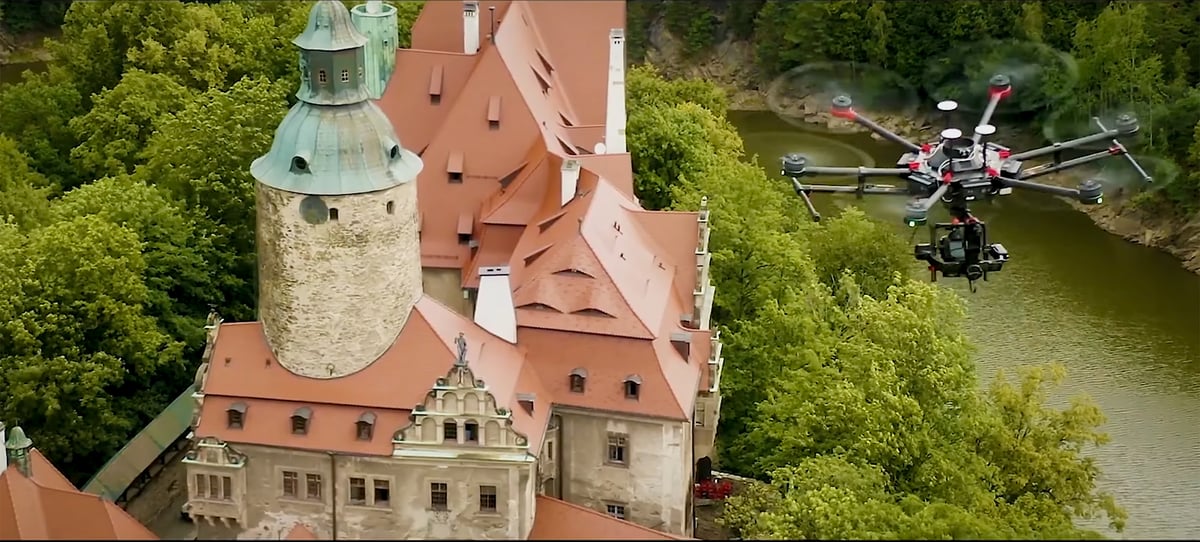
Although how you take your photos generally doesn’t matter to the software, if you don’t have enough photos from enough angles you can have gaps or missing data. To achieve a high-quality 3D model, the pictures need to overlap by 80 to 90%.
Seasoned pilots understand the flight paths and speed required for accurate aerial photography, but if you intend to use a drone yourself, look for a model with waypoint navigation software or use photogrammetry software, like DroneDeploy, that includes a module for controlling the drone’s flight path.
Features to keep in mind when selecting the best software for your use include:
- Scalability for large datasets
- Hardware acceleration (GPU usage)
- Workflow integration (GIS, CAD, BIM support)
- Export formats and compatibility
- Cloud vs. local processing
- Automation features (like AI masking or classification)
- Licensing model and price
Keep in mind that some software (like Metashape or RealityCapture) offers a lot of depth but may require professional training. Others (like DroneDeploy) are more user-friendly but less customizable. Community support, tutorials, or customer service can help guide new users.
ReCap Pro 2026
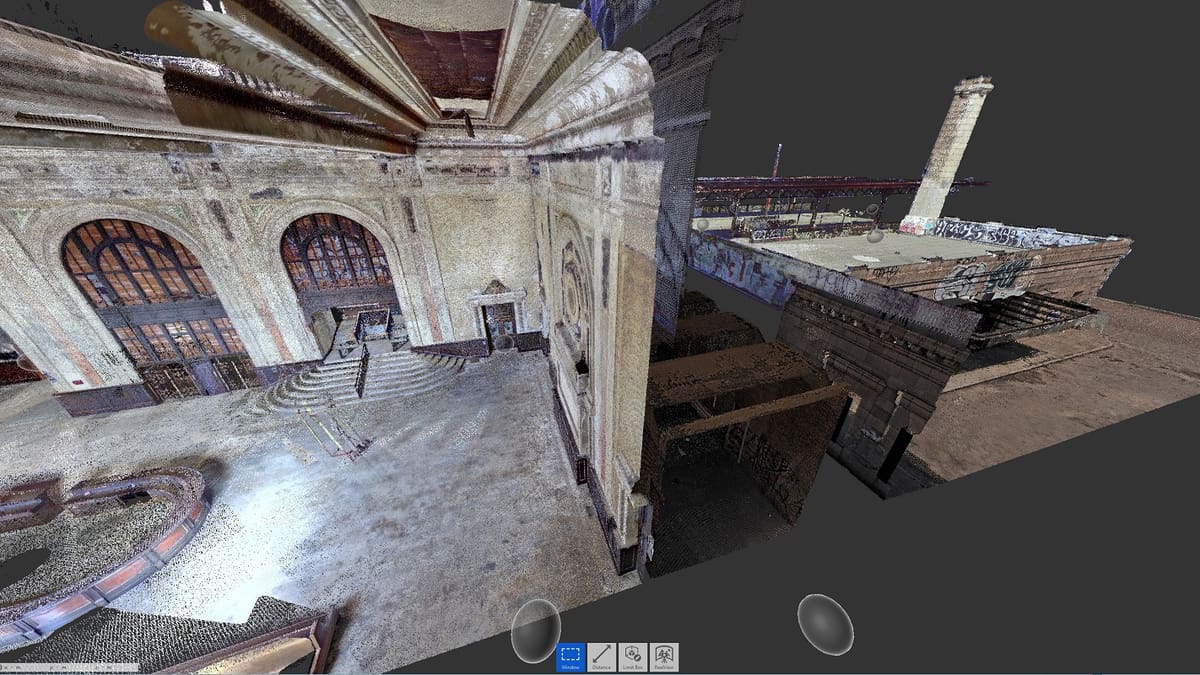
Just like most products from the giant software publisher Autodesk, ReCap is developed for integration into workflows that rely on multiple tools — ReCap is short for “reality capture”, by the way.
You can export the result of your photo captures as a point cloud or mesh into CAD (computer aided design) and BIM (building information management) software, such as Autodesk AutoCAD or BIM 360.
The software has two basic modes — one for aerial photogrammetry and another for close-range photogrammetry. In addition to photographs, ReCap can also process laser scans and align them with photo-based projects to generate 3D models. Although ReCap can automatically register images, it allows you to pick manually to enhance the overall result.
Apart from capturing large structures in 3D, this photogrammetry software is also equipped with high-quality analytical tools, advanced editing, fly features for UAV/drone photos, and collaborative tools. ReCap also comes with several data services that are designed to process the scans. The foremost data service is Auto Cleanup, which automatically identifies and removes unwanted points like people and moving objects photographed accidentally. Another beneficial service converts the scan data into meshes that can be exported for processing in other applications.
New in ReCap Pro for 2026 are more advanced scan-to-mesh capabilities, a new integration with Revit, ReCap Photo integration, and more powerful cloud-based sync features. The improved all-in-one photo-to-3D workflow is really a significant upgrade. ReCap Pro 2026 integrates ReCap Photo, offering a unified workflow that simplifies the conversion of photos into detailed 3D mesh models. This eliminates the need for separate installations and provides an easier, more streamlined approach to generating 3D models from imagery. By processing photos directly within ReCap Pro, you can avoid unnecessary complexity, helping to save both time and resources while expanding their modeling capabilities to include photo-based reality capture, Autodesk says.
Metashape
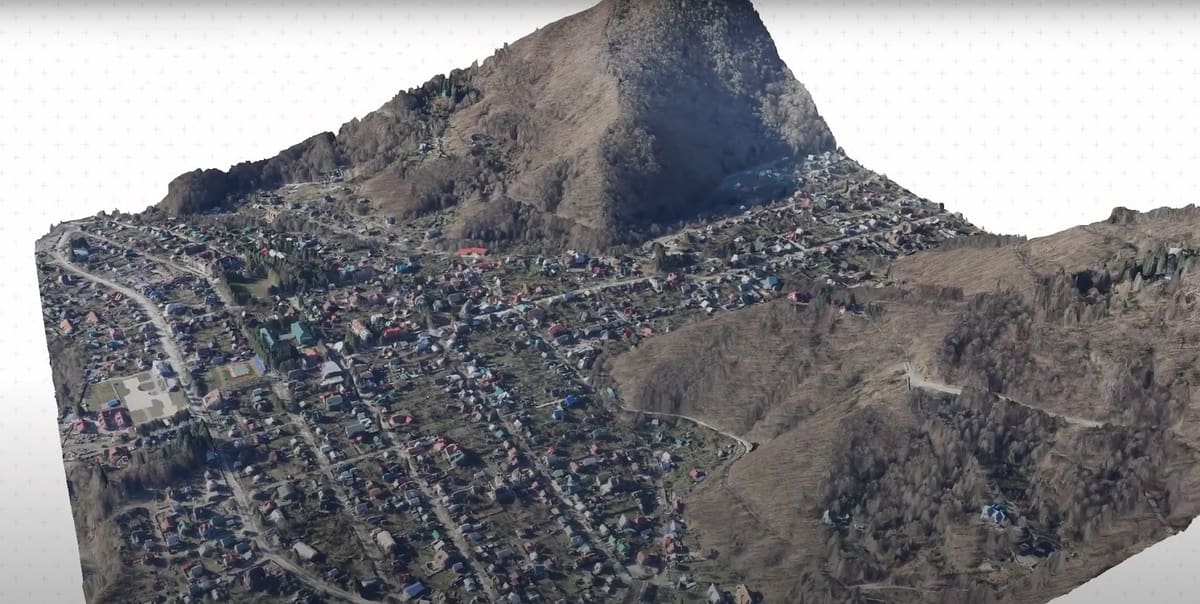
Agisoft Metashape – formerly known as Agisoft Photoscan – is a professional photogrammetry software and a popular choice for GIS applications, cultural heritage documentation, game development, and visual effects production. It is suitable for both close-range photogrammetry and aerial photogrammetry.
The program includes comprehensive tools for editing the point cloud before generating a 3D mesh. This includes automatic classifications of point clouds to customize geometry reconstruction. Meaning, the photogrammetry software can distinguish between diverse objects like buildings and trees, allowing you to filter them.
Metashape improves the processing time and quality of captures over previous iterations, using community-driven data to improve algorithms and machine learning. Over time, in theory, it will continue to improve the more the program is used. It doesn’t directly use all user data to train its algorithms (like cloud-based AI platforms do), instead, individual users can train their software based on their own datasets.
Also, extensive measurement tools enable mining companies, surveyors, and others to conduct volumetric measurements. Among the other stunning features is the possibility of editing 4D models, which means entire scenes can be recorded in 3D and manipulated. The term “4D models” in photogrammetry typically refers to 3D models over time (i.e., time-series data). Metashape supports processing time-series image sets (e.g., for monitoring changes or dynamic scenes), but it’s not a full-fledged 4D animation or simulation platform.
RealityCapture V1.5
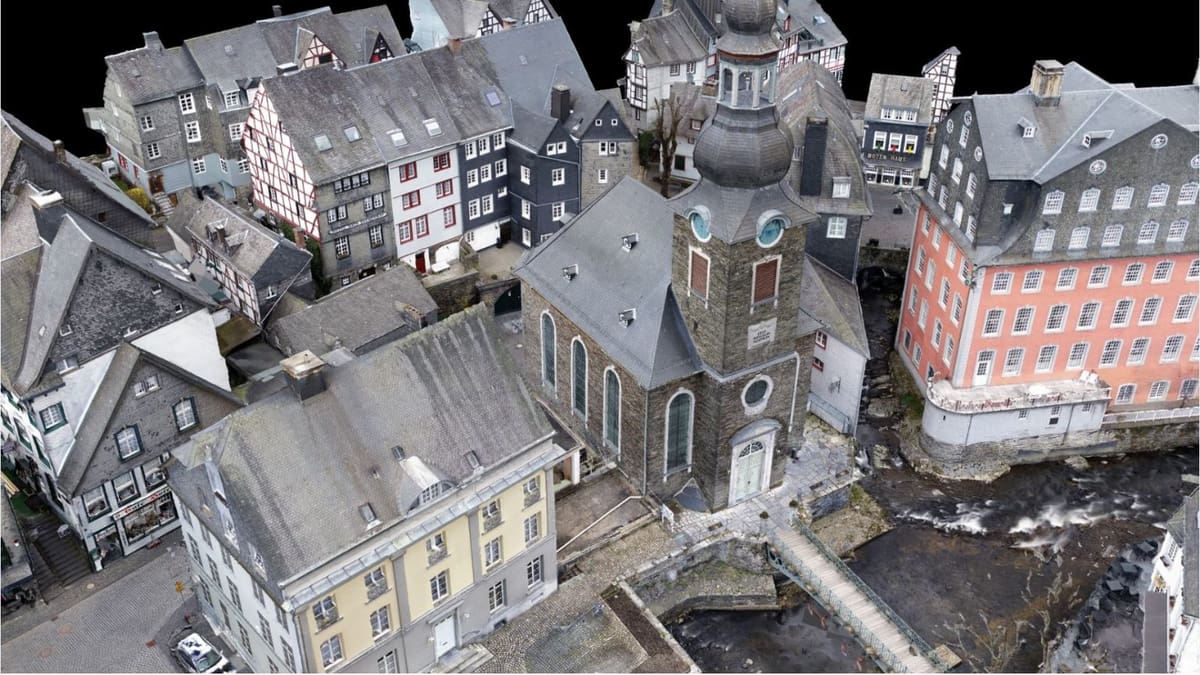
In 2021, Epic Games bought photogrammetry software company Capturing Reality to incorporate its technology into its Unreal Engine, which is used to develop some of the world’s best-known games, like Fortnite. The good news is that RealityCapture is also available to download.
The software can produce accurate 3D models from a variety of input media and is a favorite among pros in surveying, architecture, cultural heritage documentation, virtual reality, and, of course, game development.
Like the other photogrammetry software on our list, RealityCapture uses photogrammetric techniques to reconstruct 3D geometry from 2D images to create accurate 3D models. What sets it apart is its automation. RealityCapture enables fully automatic combination of laser scans and photographs. Plus, it boasts really fast processing speeds and batch processing capabilities that let you work with large datasets — photo data, 3D scan data – to see results quickly.
With RealityCapture you can edit 3D meshes in real-time to refine and adjust models during the reconstruction process. This real-time feedback can enhance your ability to make immediate adjustments to achieve the desired results. Another bonus is the cloud processing service, so you can offload computational tasks to the cloud for increased processing power and scalability.
New in the 1.5 version introduces several significant enhancements over version 1.3, focusing on improved performance, expanded export options, and enhanced workflow flexibility. The most significant new feature is arguably the dramatic improvement in texturing performance and quality, up to 2-times as fast. Texturing is often one of the longest steps in photogrammetry workflows. A 2x improvement in texturing speed saves significant processing time on large or complex models—crucial for production environments (e.g., VFX, game development, or surveying).
3DF Zephyr (8.0)
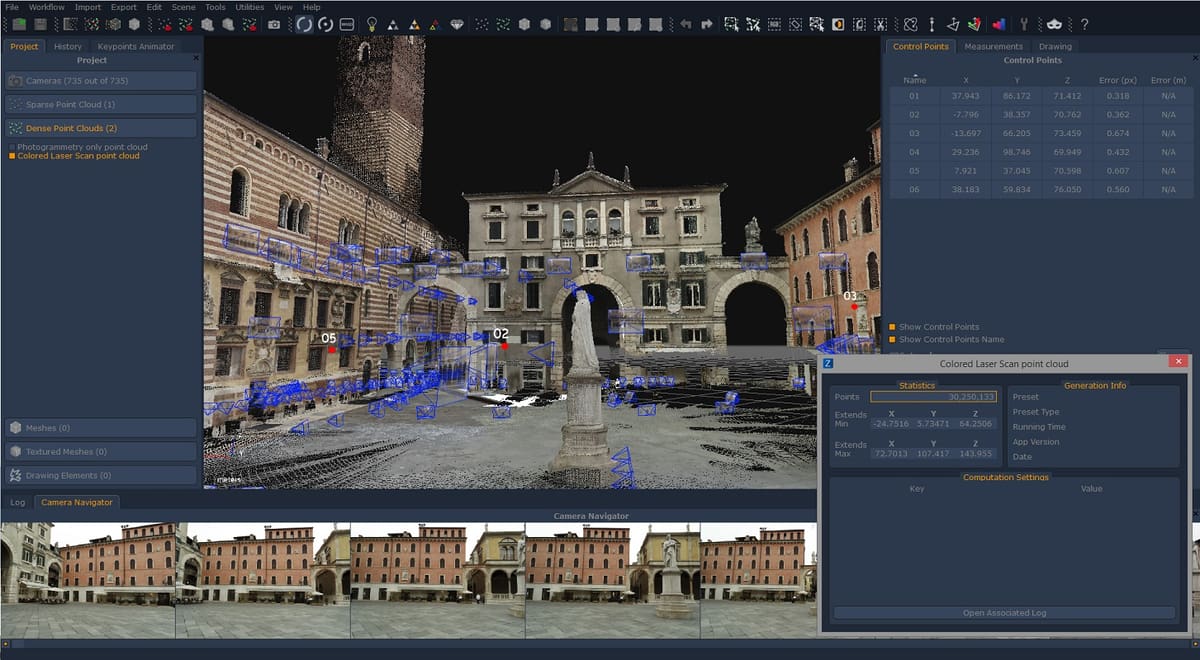
The main reason we like this professional photogrammetry software is that it’s built for user-friendliness. Its user interface lowers the entry barriers for beginners and facilitates generating 3D scans with easy-to-use wizards that explain the process and help choose the right settings. Nonetheless, experienced users can make a lot of tweaks to optimize the result and profit from extensive exporting options into many file formats.
Like other cutting-edge solutions, we found 3DF Zephyr is capable of aligning photogrammetry data with laser scans. This way, you increase the precision of your 3D model while also retaining the texture maps. Although the usual process is completely automatic, you can intervene manually to work with your scan in a CAD program. 3DF Zephyr enables you to draw shapes using the imagery as a reference. This native CAD model can be sent to programs like Autodesk Revit for BIM (building information modeling).
One of the best things about this photogrammetry software on our view is that you can download a free version and take it for a test drive. The difference between the paid version is a 50-image cap used for the reconstruction and a smaller range of editing tools. Professionals should also check out the GIS and survey tools in the advanced versions.
New in the 2026 release is faster and more accurate structure-from-motion processing, improved mesh quality through photoconsistency-based optimization, and expanded support for 360° camera images. 3DF Zephyr 8.0 introduces several major advancements over previous versions. It adds OpenCL support for Intel and AMD GPUs, expanding compatibility beyond NVIDIA cards. The update brings AI-based automatic classification for aerial photogrammetry, making it easier and faster to process large datasets. An upgraded version of the Masquerade tool includes AI-powered masking, streamlining the object isolation workflow. Photoconsistency algorithms have also been refined for better mesh quality. Zephyr 8.0 improves support for 3DConnexion devices to enhance user navigation and adds native compatibility with formats like Leica LGSx and Teledyne Ladybug, improving integration with professional scanning hardware.
In addition to the annual subscription and the free version, there’s a perpetual license for around $4,500 and a Lite version with limited tools for about $200 a year.
Bentley iTwin Capture Modeler
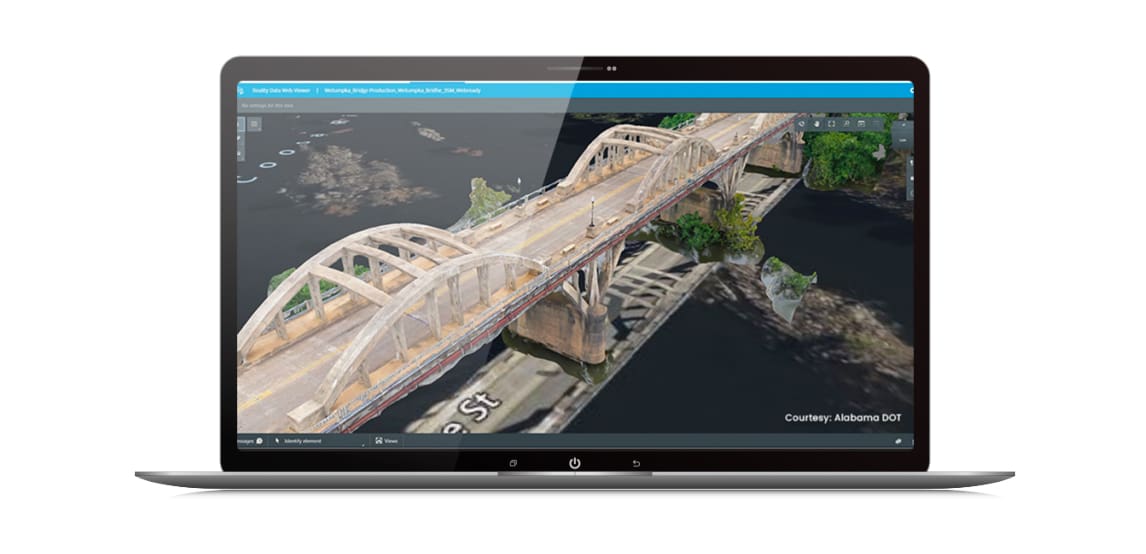
Another major 3D software developer that has published its own take on photogrammetry software is Bentley. Given Bentley’s portfolio of sophisticated BIM and CAD software tools for architecture and building, it is no wonder that its iTwin Capture Modeler can generate 3D models of entire cityscapes. Hence, the program is suitable for large infrastructure projects and sites of large size.
iTwin Capture Modeler offers desktop capabilities for creating reality data that will serve as the digital context for design, engineering, construction, and operations workflows. It enables you to produce reality meshes of virtually any scale by using photographs or LiDAR point clouds. It is available in two versions: iTwin Capture Modeler and iTwin Capture Modeler Center.
Bentley has a bundle of reality and spatial modeling software solutions. The iTwin Capture Manage & Extract is hardware-neutral, independent from any post-processing software, and scalable. It lets you take massive amounts of spherical images, planar images, oblique images, point clouds, and textured meshes and combine them with traditional GIS resources, such as vector data, orthophotos, and raster images. Import reality data captured with terrestrial, mobile, and aerial mapping systems, taken on the road, rail, water, and in the air, both indoor and outdoor, and aboveground and below ground.
Correlator3D
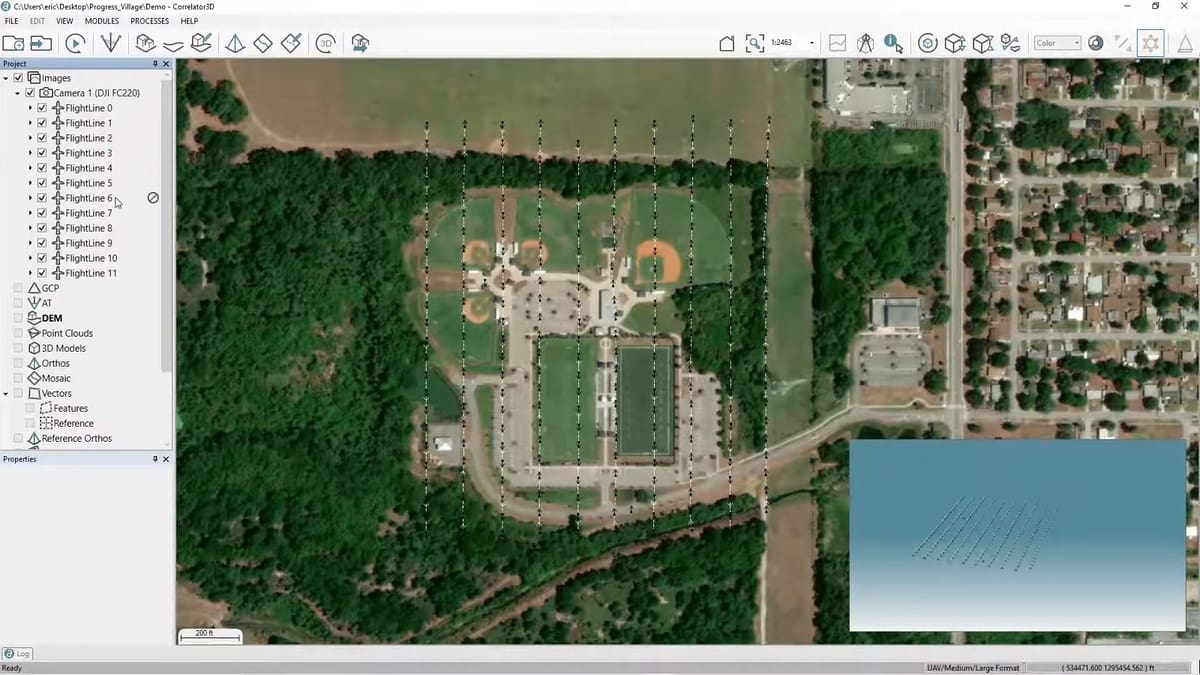
Correlator3D made by Simactive is an end-to-end photogrammetry software package. It focuses on aerially captured images and is equally capable of handling data from drones, aircraft, and satellites. If you are more interested in terrain than the structures upon it, Correlator3D has a powerful automated tool to turn your Digital Surface Model (DSM) into a Digital Terrain Model (DTM). You can also create orthomosaics and 3D models. It can even process multispectral and hyperspectral imagery, enabling users to analyze and extract information from different spectral bands.
You can take your output data and integrate it into geographic information systems (GIS) and computer-aided design (CAD) software for further analysis and visualization.
Used extensively by private companies and governments, it comes with a free trial offer. As a pro software, it comes with deep resources and training opportunities.
DroneDeploy
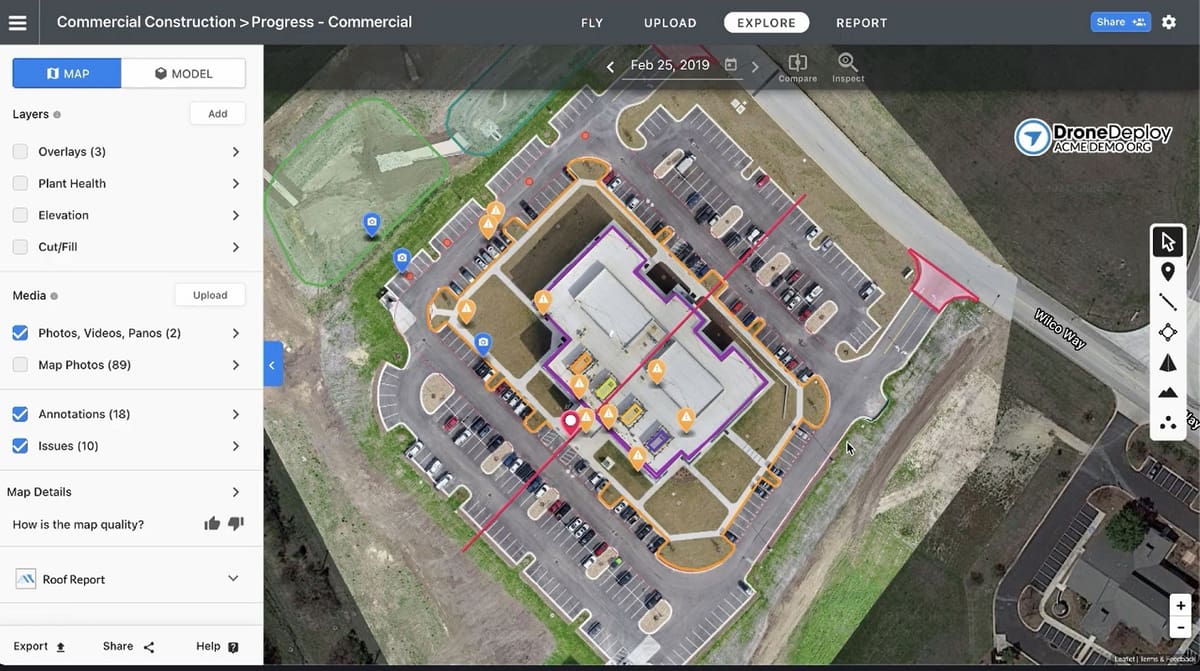
DroneDeploy is an easy-to-use aerial photogrammetry software covering the entire process from flight to finished 3D model. This solution consists of two apps: Frist, a mobile app that’s used to control the drone’s flight path. Define the area you want to scan on an interactive map and set the direction the drone will follow. The app controls the entire flight from take-off to landing. The platform is compatible with a variety of drone models, supporting both consumer and enterprise-grade UAVs. This allows users to use a range of drones for data collection.
The second app is cloud-based and creates 3D models and maps using the images taken with your drone. You can select from various processing modes for your specific needs. You can view the result in four map layers that give you information on plant health and elevation. Besides, DroneDeploy is equipped with powerful tools that allow you to measure distances, areas, and volumes. To get the most out of your data, you can add additional features from the DroneDeploy app market.
The DroneDeploy ecosystem is compatible only with DJI drones.
Imagine Photogrammetry
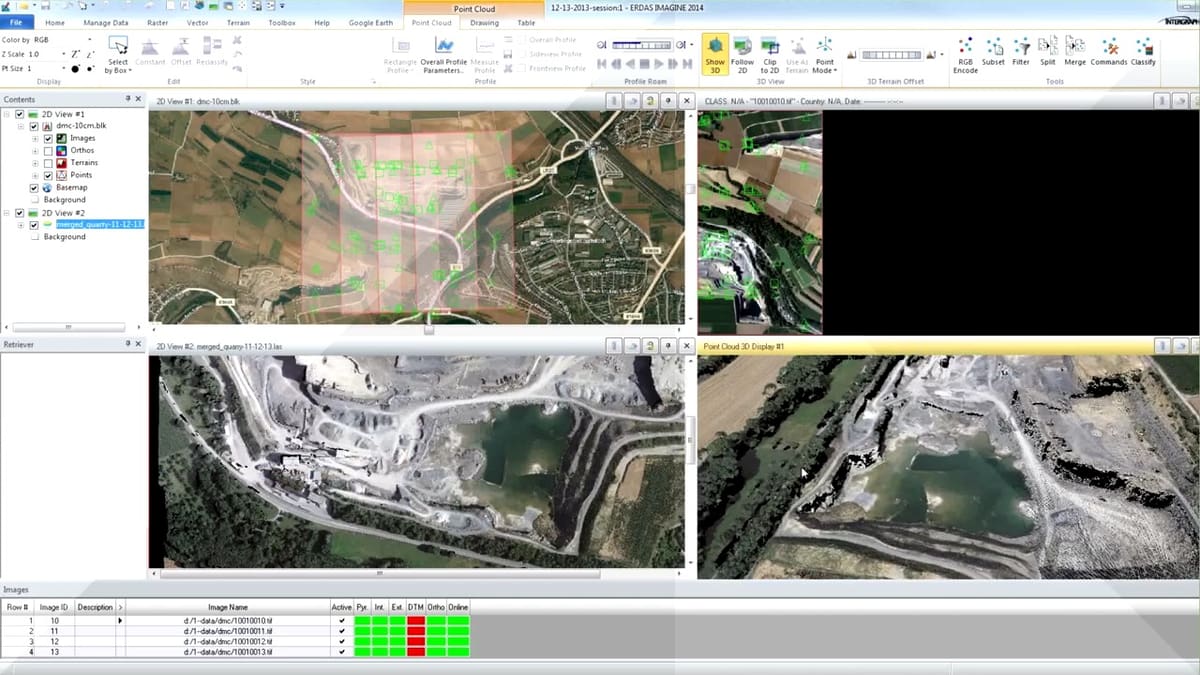
Imagine Photogrammetry from software giant Hexagon is an integrated collection of software tools popular at national mapping agencies, regional mapping authorities, and commercial mapping companies.
Pro features include full analytical triangulation, digital terrain model generation, orthophoto production, and extracting 3D features. By automating precision measurement and including flexible operations such as terrain editing and feature extraction, the solution is flexible enough to fit a wide range of applications.
Hexagon offers an array of add-ons that expand the core functionality of Imagine Photogrammetry, such as a DSM (Digital Surface Mode) Module used for representing the topography or relief of the Earth’s surface; a Spatial Modeler; and a Terrain Editor.
Photomodeler
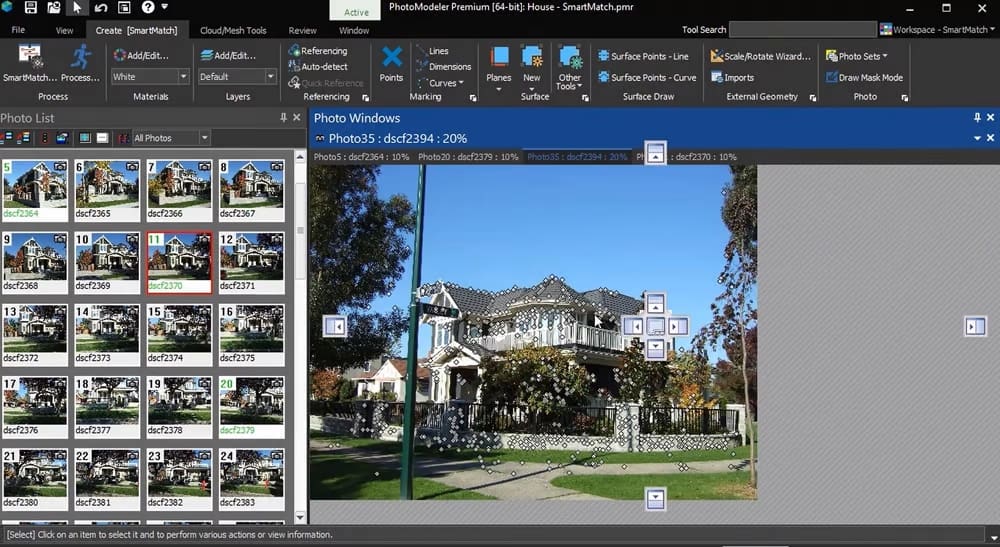
Photomodeler by PhotoModeler Technologies has long been a go-to tool for pros in various industries, from engineering and architecture to archaeology and forensics, before the rise of today’s affordable 3D scanning equipment because you only need a camera. But even now, it is still incredibly useful due to its precision. You can also import LIDAR and point cloud data to extract key evidence from your photos.
PhotoModeler software extracts measurements from photographs taken with an ordinary camera, but you can also feed it drone and video footage. It’s a low-cost way to achieve accurate 2D or 3D measurements and reality capture.
Inside the photogrammetry software, you can choose between three methods to generate your model: manually match common features between images, automatically generate a 3D model from coded targets, or generate point clouds from overlapping images.
The standard version of PhotoModeler contains the core functionalities and is best suited for manual, CAD, and single photo projects. The premium version adds UAS comparability to support drone-taken imagery and integrate 3D laser scan data, among other features.
WebODM
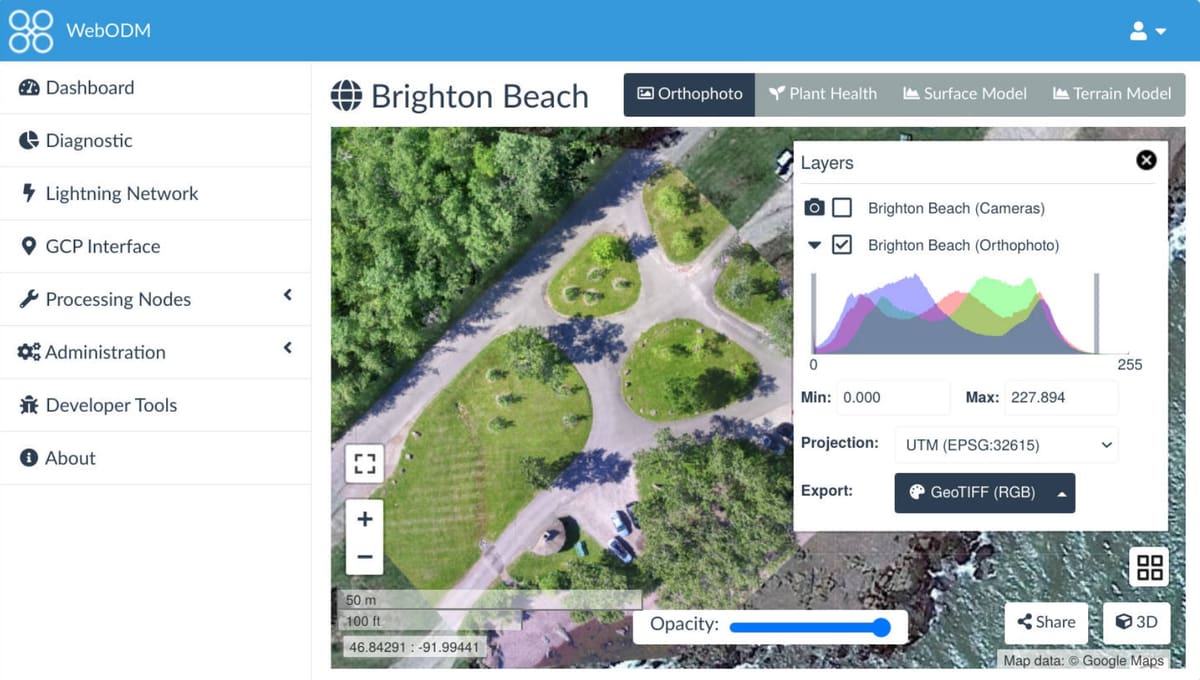
If you’re looking to get your feet wet in aerial photogrammetry with, say, your own drone, take a good look at WebODM. The folks at OpenDroneMap created WebODM to be an accessible and user-friendly platform. Upload your drone imagery, and the software takes care of the almost all of the processing steps. WebODM is a popular open-source photogrammetry software, frequently used for drone mapping. It’s a good choice for users seeking a cost-effective option that can be run on local servers.
You can produce elevation and textured 3D models, geo-referenced maps, and point clouds. It can be used on your computer offline or loaded to servers to use from the cloud, and you can export your elevation contours to the likes of AutoCAD, ShapeFile, and more.
The Software is open source, and you can download it from the GitHub page for free. Some command-line skills are required, though, to get it running. If you want a more accessible entry to the software and customer support, you can also purchase a perpetual license for $57 that comes with an installer.
How to Learn & Master Photogrammetry
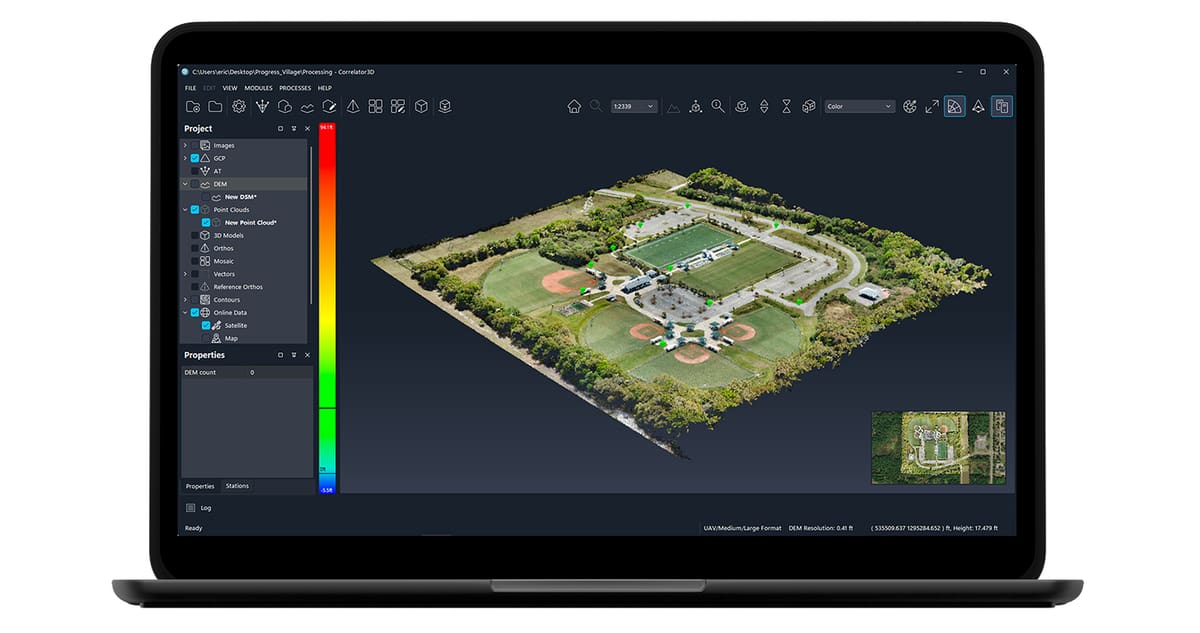
As drones, scanners, and software become more accessible and available, the field of photogrammetry is booming. From law enforcement to land management, urban planning to climate science, photogrammetry coupled with other types of data is rapidly advancing these disciplines.
There’s more to mastering photogrammetry than software and drones. You’ll need a solid foundation in camera geometry, image matching and triangulation, various sensor and data types, plus understanding point clouds and their applications.
If you’re not in a position to take a university course on photogrammetry, you could try these online courses below.
Recommended Online Courses
- Introduction to Photogrammetry by EpicGames
- Advanced Photogrammetry and Mapping with UAS Certificate from Michigan Tech University
- Start a drone business – Aerial Photography and Mapping at Udemy
- Photogrammetry With Drones: In Mapping Technology at Udemy
- Photogrammetry for Product Design and AEC at LinkedIn Learning
- Master 3D Reconstruction with Advanced Photogrammetry by 3D Geodata Academy
- Pix4Dmapper Essentials certification at Pix4Dmapper
License: The text of "Our 10 Favorite Photogrammetry Software Tools & How to Pick the Right One" by All3DP Pro is licensed under a Creative Commons Attribution 4.0 International License.
CERTAIN CONTENT THAT APPEARS ON THIS SITE COMES FROM AMAZON. THIS CONTENT IS PROVIDED ‘AS IS’ AND IS SUBJECT TO CHANGE OR REMOVAL AT ANY TIME.


